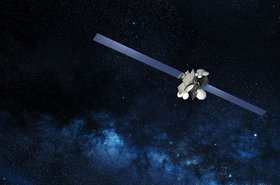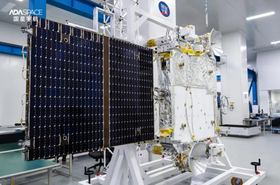The last three years have seen an unprecedented wave of merger and acquisition activity sweep across the satellite market, bringing a new diversity of capabilities to the connectivity market as operators gain access to one another’s satellite fleets, forming multi-orbit offerings.
After years of excitement from some about the potential of low-earth orbit (LEO) satellite technologies, accompanied by the anxieties of others about its potential for disruption, Viasat acquired Inmarsat in a $7.3 billion deal in June 2023. That same year, in September, Eutelsat completed its merger with OneWeb for $3.4bn.
Most recently, SES, a satellite industry giant founded by the Luxembourg government, said it intends to acquire Intelsat for $3.1 billion.
The impetus for these moves could be the emergence of big LEO offerings from Elon Musk’s Starlink and Jeff Bezos’s Kuiper; billionaire-backed all-sector platforms for consumers, enterprises, and governments that run the gamut of connectivity needs with an unmatched appetite for capex and competitive pricing, headed by enigmatic tycoons with a knack for always being in the headlines.
A less sensational explanation could be that economic circumstances have rendered consolidations organically inevitable.
“The efficiency of merged entities is the way they have to do it these days,” a specialist in satellite M&A tells DCD. “The operational synergies are needed in the new market.”
Satellite markets of yesterday
Charting the changing climate of this market means taking a look at how it used to work. Satellite commercialization was initially modeled upon the scientific achievements that pioneered the technology.
“Since the late 1990s, and until 2020, most commercial satellite infrastructure was located in geostationary orbit (GEO) at 36,000km,” Pierre Lionnet, research and managing director at ASD-Eurospace, says. “This favored the development of large, high-capacity satellites able to provide global coverage of the Earth. They provided high relays in the sky, complementing deep-sea cables to connect any point on Earth, even in remote areas lacking terrestrial infrastructure, including oceans and deserts.”
This GEO dominance was mostly B2B, involving a mix of TV broadcast and data transmission for enterprise and government.
“It was a great run because of growth in direct-to-home,” adds a specialist in satellite M&A. “[Broadcast satellites brought] long-term contracts which were very financeable for a satellite with a 10-15 year life. There was a huge tailwind in GEO growth because of the expansion of television channels. That came to an end with the concept of over-the-top content delivery that went through the internet. The business became about data, not video streams.”
This need for the transmission of data was something GEO satellites always struggled with, never being able to compete with the speeds of terrestrial connections. Since the 1990s, LEO has been a preferable alternative.
“Commercial LEO communications systems from the late 1990s served niche market segments (mobile voice and data communications, narrowband and IoT), but only two operators eventually survived the first LEO wave, Iridium and Globalstar,” Lionnet explains.
First experimented with in the 1980s, LEO satellites fly far closer to the Earth, allowing much higher throughput and lower latency, though this altitude means they cannot maintain geosynchronous positions, zooming over continents and oceans in minutes. They could only be useful in large constellations of satellites that would ring the planet, with at least one platform always in range of Earth’s inhabited continents.
The principle was once as outlandish as moon bases and space elevators, until demonstration of low-cost heavy rideshare rockets brought the price of launch per satellite crashing down, and dozens of powerful proliferated satellites could be inserted at once, enabling new highways of data transmission.
Despite this new vector of disruption, the balance has yet to be upended. While LEO is growing fast, geosynchronous satellites continue to represent the bulk of the market.
“[The LEO] segment is currently worth less than a billion,” Lionnet says. “The GEO segment represents $15-20bn in annual revenues.”
In addition to GEO’s legacy status, it also possesses core advantages over LEO that will never quite be matched, namely its power to cover whole continents with a single satellite.
Multi-orbit necessity
The fast rise of Starlink combined with the verticalization strategy of SpaceX, which Kuiper may well seek to emulate, have drawn suggestions of monopolizing forces in the satellite market, one which suggests these networks may adopt a GEO capability to establish a truly comprehensive multi-orbit offering like the newly consolidated entities of Eutelsat-OneWeb or SES-Intelsat (though the latter uses medium-Earth orbit through the O3b mPOWER constellation).
“GEO systems are still the most competitive of all large-area broadcasting solutions (in terms of cost/bit transmitted), and there is still demand for broadcast,” Lionnet says. “They are also inherently more efficient to serve areas with higher density of customers, because there is no wasted capacity. Also, the government segment in GEO is still very strong, and GEO satellites remain a very efficient solution for all applications where some latency is not a critical issue (or for those governments that can’t afford a global LEO system).”
While SpaceX has opted to develop many impressive technologies in-house, it isn’t above growing by acquisition. In 2021, it purchased startup Swarm Technologies for an undisclosed sum, gaining access to 30 smallsat specialists and a network of 120 tiny satellites and equally small antenna designs.
While heralded as a rarity for the spacefaring giant, the news isn’t the first case of SpaceX shelling out for market-beating tech, given the company took a 10 percent stake in Surrey Satellite Technology Ltd in 2005, whose founder, Sir Martin Sweeting, is thought to be the father of the modern small satellite.
Satellite orbital realms aren’t the only decisive, differentiating advantage in satellite markets that influence consolidation pressures.
Are some applications consolidation-proof?
Some of Starlink’s contemporary success has come from working with existing satellite resellers to market capacity, much of which goes unused as satellites orbit above nations and oceans with which the SpaceX marketing teams are not as well acquainted. Since the second half of 2022, Starlink has been working with partners like Speedcast, SES, KVH Industries, netTALK maritime, Singtel, Tototheo Maritime, and Marlink in maritime shipping alone.
That relationship suggests that as Starlink further establishes itself, the services it provides will become essential enough that it has the leverage to cut out or acquire companies acting as its middlemen.
Our expert in M&A calls this a definite option for resellers on the consumer side, and maybe even in-flight connectivity in the aviation market, but these industries behave very differently.
“It’s easy to install these terminals at your house, but it doesn’t seem like Starlink wants to be responsible for guaranteeing the performance of antennas on cruise ships and oil rigs,” they say. “You’re talking about chartering helicopters for offshore maintenance. I don’t see SpaceX committing to delivering something like that. Guys like Speedcast have been honing the ability to do this for years. I would say that the more complex the installation and maintenance, the better the business case of an independent value-added reseller.”
Acquire to compete?
When asked if he foresaw the possibility of Starlink and Kuiper directly buying their competitors, in LEO or otherwise, Lionnet has a simple answer.
“No. But I do think that with all the plans announced, the competition in the LEO B2B space – IFC, maritime, private networks – will drive prices down and put some players out of business,” he says. “The B2G space will create some opportunities for medium-sized constellations, such as IRIS² and PWSA, but the global B2C segment will probably not be able to keep in business more than one or two very big, Starlink-like, operators with thousands of satellites.”
One such competitor, Rivada Space Networks, which is building the Outernet constellation for enterprise and government, recognizes the build-or-buy ultimatum for unique satellite technologies.
“Some may try to build [unique technologies like Outernet] but I think it’s extremely likely that those operators – and perhaps the cloud service providers themselves – will seek to buy those capabilities to offer a full portfolio of connectivity services to their end customers, just as the GEO operators have been buying LEO assets to fill out their portfolio,” speculates Brian Carney, senior vice president at Rivada Space Networks.
Our expert in M&A predicts more satellite manufacturers becoming affiliated with an operator, perhaps further consolidating some newly merged satellite players.
“Building satellites is a lumpy business,” they say. “Operators guarantee annuity, which is good from a finance perspective.”
Their understanding of the market was one of compounding joint ventures, collaboration, and mergers, something they believe has now slowed.
“The last 120 days have put a spanner in the works on that,” they admit. “Within respective geographies like Europe, you’ll see a continuation of demand for in-house technology, which is going to drive M&A. In the US, you’ll see consolidation and verticalization between primes and subcontractors, from manufacturing to operation. Developing nations will be seeing more use for government applications as part of a trend for satellite to become a core requirement of modern militaries. All things considered, I’m more optimistic about the essentiality of the satellite industry as a solid slice of global GDP than I was ten years ago.”
As markets normalize following recent shocks, consolidation activity could well resume the pace experts had been tracking, but the reality of monopolization will depend on Starlink and Kuiper’s more volatile drivers finding equilibrium.
Read the orginal article: https://www.datacenterdynamics.com/en/analysis/satellite-ma-a-changing-landscape/










